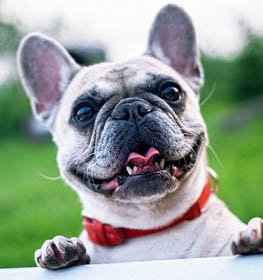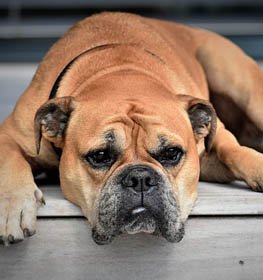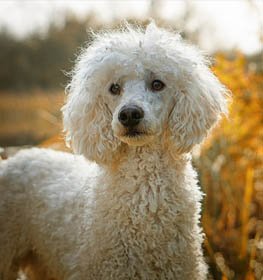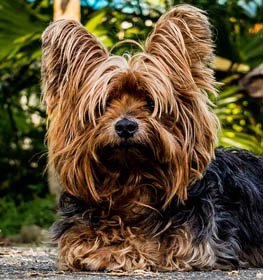Cotonese Information & Dog Breed Facts
Collection of all the general dog breed info about Cotonese so you can get to know the breed more.
| Group | Companion Dogs |
|---|---|
| Popularity Rank | 281 |
| Reviews | 1 |
| User Ratings | |
|
Compare the Cotonese With Other Dogs
Select at least one dog breed to make the comparsion. | |
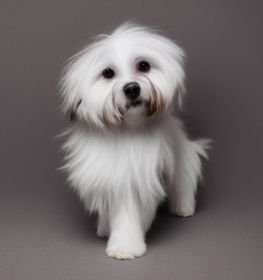 | |
| Origin | |
|
Common Names & Aliases
What other names is a Cotonese known by? Discover all traditional, regional and informal names used for this breed. | Coton Maltese |
|---|---|
|
Breed Classification
What type of dog breed is a Cotonese? Learn about its genetic classification and breeding category. | Cross Breed Coton de Tulear and Maltese mix |
|
Size Classification
What size category is a Cotonese? Learn how big the Cotonese breed typically grows. | Small |
|---|---|
|
Weight Statistics
How much does a Cotonese weigh? Discover typical weight ranges for adult males and females of the Cotonese breed. | 6-15 pounds (3-7 kg) |
|
Average Weight
What is the average weight of a Cotonese? | 10.5 pounds (5 kg) |
|
Height
How tall is the Cotonese? Cotonese height: | 8-12 inches (20-30 cm) |
|
Average Height
What is the average height of a Cotonese? | 10 inches (25 cm) |
|
Price Range
How much does a Cotonese puppy cost? Find current market prices and factors affecting Cotonese costs. | $400-$600 If you choose to purchase the Cotonese, you should know that the mentioned amount of money is an average of the collected data from breeders’ sites and puppy finder places. If you have a Cotonese for sale, please advertise it on a reliable website to make sure the Cotonese gets to a happy place. |
|---|---|
|
Availability
How easy is it to get a Cotonese? How many Cotonese are there in the world? | Average: The Cotonese is a commonly available dog breed. There is less risk of overbreeding compared to the very popular dogs. Of course, they may be more popular in some countries, and inbreeding may occur, so be careful. |
|
Intelligence Rating
How intelligent is a Cotonese? Discover the Cotonese's intelligence ranking and learning capabilities. | Low to average: This canine intelligence is not the brightest one. Keep in mind that if you want to teach them any tricks, they understand and memorize new commands in 40-80 repetitions. Cotonese obey the first command 30% of the time or better. So if you want to have a smart dog, you might have to reconsider your choice with this breed.
The Cotonese ranks below average in the intelligence ranking of dogs. |
|---|---|
|
Training Difficulty
How easy is it to train a Cotonese? Learn about the Cotonese's trainability and response to training methods. | Cotonese dogs are quite easy to train. Sometimes they can be challenging, but if you're consistent in teaching new commands they will obey for sure. |
|
Watchdog Rating
How good is a Cotonese as a watchdog? Learn about the Cotonese's alertness and guarding instincts. | Cotonese dogs are average watchdogs. If they sense something different, they will alert you, but observation isn't considered their main job.
|
|
Territorial Protection
Is a Cotonese protective of its territory? Learn about the Cotonese's guarding instincts and behavior. | Cotonese dogs strongly protect their territory. This breed is a complete security guard, so you don't have to be afraid in case of danger. |
|
Personality Traits
What personality does a Cotonese have? Learn about characteristic Cotonese temperament and behavior traits. | PlayfulLovingEnergeticAlertIntelligentResponsiveAffectionateSocialCheerful |
|---|---|
|
Sensitivity Level
How sensitive are they? Cotonese sensitivity: | They are a little bit more sensitive than other dog breeds. Soft punishment affects them emotionally. Cotonese dogs don't tolerate irregular daily routines, noisy households, and frequent guest visits really well.
They are receptive to their owner's emotions and make wonderful family companions. |
|
Affection Level
How affectionate are they? Is a Cotonese a good family dog? | High: Cotonese dogs are genuinely loyal, soft and gentle, loving, and affectionate dogs toward their handlers. They enjoy quality time with their owners despite the activity and are considered great therapy dogs for those in need. This breed responds strongly to their handler's emotions because they bond closely. Their happiness is your happiness. |
|
Social Needs
How much social interaction does the Coton Maltese need? Cotonese social needs: | Cotonese dogs need a lot of social interaction. They desire to always be with someone or around people. This breed hates being left alone. |
|
Impulse to Wander or Roam
How likely is the Cotonese to run away? Does this breed explore or wander a lot? Does Cotonese roam? | Cotonese dogs tend to escape less than other breeds. They have low to average wanderlust potential. Exploring the world is not the best activity they can imagine. |
|
Prey Drive
Do this canine have a strong prey drive? Does Cotonese have high prey drive? | Cotonese dogs have an average prey drive, which means that they don't have a high impulse to chase and catch something like a cat or any other small aminals, but it might happen. Training can help to achieve good behavior. |
|
Barking Frequency
Does a Cotonese bark a lot? Learn about typical Cotonese vocalization patterns and triggers. | Average to High: The Cotonese is a vocal breed. Not the best choice if you prefer a quiet breed. They often bark loudly and howl sometimes. They can change their barks depending on their emotional level and what they're trying to say. Different barks could mean the same and the same barks could have different meanings.
Top reasons for barking: protection, alarm, fear, boredom, attention-seeking, greeting, separation anxiety, compulsive barking. |
|---|---|
|
Playful Nature
How playful is a Cotonese? Understand the typical play drive and energy level of the Cotonese breed. | The Cotonese is a playful breed. Excited barking and sometimes nipping will alert you to play. |
|
Apartment Adaptability
Can a Cotonese live in an apartment? Learn about the Cotonese's suitability for apartment living. | Very house-friendly dog the Cotonese breed. It's good if you have a small garden where he can go out and do his business, but it's not important at all. You can get enough exercise with one or two walks a day, so keeping them indoors shouldn't be a problem. |
|
Lifestyle Adaptability
How adaptable is a Cotonese to lifestyle changes? Learn about the Cotonese's flexibility to new situations. | Cotonese dogs adapt very well to lifestyle changes and basically all living environments. They don't mind moving from one place to another with their owner. |
|---|---|
|
Alone Time Tolerance
Can a Cotonese be left alone? Learn about the Cotonese's tolerance to solitude. | Cotonese dogs tend to have separation anxiety when their owners left them alone at home because they bond very closely with them. |
|
Bite Risk Assessment
What is a Cotonese biting potential? Learn about the Cotonese's bite risk factors. | Low 🔽 The Cotonese has a low chance of biting somebody. Top reasons for dog bite: protection, pain, excitement, herding instinct, being provoked. (Data based on the available online bite statistics.) |
|---|---|
|
Mouthing Tendency
Is a Cotonese mouthy? Learn about the Cotonese's tendency to use mouth during play. | Cotonese dogs have an average tendency to nip, chew, playbite, or herd people. It's a common habit during puppyhood, not aggressive behavior. These "bites" don't hurt, but Cotonese dogs need to be taught a good attitude. |
|
Bite Strength Rating
How strong is a Cotonese bite? Learn about the Cotonese's bite force measured in PSI. | Between 100 and 200 PSI 🔽 Cotonese bite force: Weak. The Cotonese bite force is considered weak when compared to other dog breeds. The bite force Cotonese measurements usually fall below 200 PSI, making them one of the breeds with the weakest bite force. The bite force of a Cotonese may be weak, but it's important to remember that any dog's bite can still be dangerous if not managed properly. Despite the bite force of Cotonese being lower, it does not make them any less lovable or enjoyable as pets.
Cotonese bite wounds might not be as severe, but it is still essential to be cautious and prevent any biting incidents. They are usually not aggressive and very friendly towards children and other animals. To ensure a well-behaved dog, it's essential to learn how to train a Cotonese puppy not to bite from an early age. With proper training and socialization, a Cotonese can be a wonderful addition to any family, providing love and companionship for years to come. |
|
Average Lifespan
How long does a Cotonese live? Learn about the typical lifespan of the Cotonese breed. | 13-15 years The average lifespan of Cotonese: 14 years |
|---|---|
|
Climate Tolerance
How well does a Cotonese handle different weather? Learn about the Cotonese's climate adaptability. | Tolerates warm and cold weather Dogs that tolerate hot and cold weather are typically those that have a double coat of fur. Dogs with a double coat of fur have a layer of fur that insulates their skin and helps protect them from the cold and the heat. |
|
Health Concerns
What health issues are common in a Cotonese? Discover typical conditions affecting the Cotonese breed. | The Cotonese is a healthy breed, but there are certain health issues that you should check with your vet regularly. |
|
Vet Care Frequency
How often does a Cotonese need vet visits? Learn about the Cotonese's veterinary care requirements. | Average The Cotonese should have a complete physical check-up at least once per year. If your dog shows any symptoms, call your veterinarian. |
|
Health Problems
What genetic/health problems does the Cotonese breed have? What are the health issues and concerns of the Cotonese breed? Most common health risks of Cotonese: | Hip Dysplasia Patent Ductus Arteriosis |
|
Energy Rating
How energetic is a Cotonese? Understand daily activity needs of the Cotonese breed. | Cotonese dogs have an average energy level, so if you live a semi-active life, this breed can be a good choice for you. |
|---|---|
|
Activity Requirement / Exercise Need
How much exercise does a Cotonese need? How much exercise do Cotonese dogs require per day?
Do Cotonese dogs need a lot of exercises? | Cotonese dogs exercise need is minimal. If you live a slow life, this breed can be a good choice for you. |
|
Sleeping Need
How much sleep does the Cotonese breed need? | Cotonese dogs sleep 12-14 hours a day as an average dog and they're not considered a lazy breed. |
|
Obesity Tendency
Is a Cotonese prone to weight gain? Learn about the Cotonese's obesity risks. | Average: The Cotonese has an average risk for obesity. Daily walks should be on schedule. To make your dog happy and fit, feed him with quality dry dog food and live an active life together. Try to find the happy medium between exercise and feeding.
If you notice any weight gain, consult your veterinarian and make a diet plan. Reduce unhealthy food and snacks, and measure the Cotonese weight regularly. |
|---|---|
|
Food Consumption
How much food does a Cotonese need daily? Learn about the Cotonese's feeding requirements. | 0.5 to 1.5 cups of high-quality dry food a day, divided into two meals. |
|
Allergy Friendliness
Is a Cotonese hypoallergenic? Learn about the Cotonese's suitability for allergy sufferers. | No Cotonese dogs don't do well with allergy sufferers by causing allergic reactions. Some dog breeds are even considered to higher possibility of an allergic response. Coat type isn't necessarily relevant, because most people are allergic to dander (flakes on the dog's skin) or saliva, not actually to dog hair. |
|---|---|
|
Coat Colors
What colors does a Cotonese come in? Discover all possible Cotonese color variations. | Cream White |
|
Grooming Requirements
How much grooming does a Cotonese need? Learn about Cotonese coat maintenance requirements. | Advanced: The Cotonese requires a lot of grooming. Cutting the dog's hair by a professional groomer can be helpful sometimes. Regular brushed dog's coat is less likely to shed. Ears and eyes should be cleaned often to avoid infections. Don't skip the seasonal flea treatment too. Occasional dog nail trimming and dog baths are important.Check the local pet store for dog grooming supplies and find the best dog shampoo to keep its coat healthy and to give your Cotonese a pleasant experience of a dog bath. If you don't have the time, skill, or money to take care of your Cotonese, search for the best dog groomer or clipping service in your area and book an appointment. Maybe you're lucky to have a dog boarding service that includes grooming or walk-in dog bath places nearby. |
|
Drooling Tendency
Does a Cotonese drool a lot? Learn about the Cotonese's drooling habits. | The Cotonese is a perfect example of a very low drooling tendency. If you're disgusted by slobber spots on your clothes, the Cotonese could be a perfect choice for you. Drooling is the unintentional saliva flowing outside of the mouth. It can be completely normal or a sign of a health problem. Certain dog breeds drool minimum compared to others, just like the Cotonese.
If you notice any change in your dog's drooling habit, you should contact a vet as soon as possible. |
|
Stinkiness Rating
Does a Cotonese smell bad? Learn about the Cotonese's natural odor levels. | Medium ⏺ The Cotonese has an average chance of bad smell. Top reasons for dog stinkiness: infection of bad tooth/ear/skin folds, gas attacks. |
|
Coat Characteristics
What type of coat does a Cotonese have? Learn about the Cotonese's fur characteristics. | FluffyDenseCurly |
|
Bathing Needs
How often does a Cotonese need baths? Learn about the Cotonese's bathing requirements. | 3-4 weeks More often than average. These dog coats tend to be longer, softer, and oilier than short-haired breeds. While a good bath every now and then is a great way to keep your buddy from becoming overly smelly, be mindful about overbathing.
Bathing will wash away your dog’s natural oils, while a simple brushing every few days should keep them clean. |
|
Shedding Level
How much do Cotonese dogs shed? How to control, reduce and prevent the shedding of the Coton Maltese? Do Cotonese dogs shed a lot? | Cotonese dogs are low shedders. It's a natural process of the hair growth cycle. The amount and frequency of hair loss mostly depend on their health status and breed type. |
|
Child Compatibility
Is a Cotonese good with children? Learn about the Cotonese's behavior around kids of different ages. | Cotonese dogs are kid-friendly dogs. This breed is a good choice if you have children. |
|---|---|
|
Pet Compatibility
How well does a Cotonese get along with other pets? Discover the Cotonese's compatibility with other animals. | Cotonese dogs are one of the friendliest dog breeds. |
|
Stranger Friendly
Are they aggressive or friendly towards/with strangers? Cotonese temperament with other people: | Cotonese dogs are stranger-friendly dogs. |
|
Cat Friendly
How well do Cotonese dogs get along with cats? Are they good with kittens? What is this fido's temperament with cats? Can they be good with cats? Can the Cotonese breed live with a cat? | Cotonese dogs are very cat-friendly dogs. |
|
Dog Friendly
Is Cotonese good with other dogs? Are they dog-friendly dogs? How well do Cotonese dogs get along with other dogs? | Cotonese dogs are dog-friendly dogs. If you want more dogs in your family or you'd like to join dog meetups, the Cotonese can be a great choice. |
|
Good For First Time Owners
Is Cotonese breed good for first-time owners? Do they make a good dog for novice owners? Is Cotonese breed suitable for first-time owners? | Yes Cotonese dogs are good for novice owners, due to their easy-going personality. |
|
Office Friendly
Are Cotonese dogs good office canines? Do Cotonese dogs make good office-friendly pets? Can they be office dogs? | No Cotonese is not the best dog breed for office environment. |
|
Senior Citizens Friendly
Are they senior citizens friendly dogs? How well do Cotonese dogs get along with the elderly people? What is the Coton Maltese temperament with senior people? Are Cotonese dogs good for elderly owners? | Cotoneses are usually recommended for elderly people. |
|
Service Dog Capability
Can a Cotonese be a service dog? Learn about the Cotonese's service work potential. | Not really This breed generally not used as a service dog. A service dog is a term used in the USA to refer to any type of assistance dog specifically trained to help people who have disabilities, such as visual impairment, hearing impairments, mental disorders, seizures, mobility impairment, and diabetes. Service dogs are protected under the ADA (Americans with Disabilities Act).
Cotonese is not the best breed for service purposes. |
|---|---|
|
Therapy Work Suitability
Is a Cotonese good as a therapy dog? Learn about the Cotonese's therapy work aptitude. | Not really This breed is generally not used as a therapy dog. A therapy dog is a dog that might be trained to provide affection, comfort, and love to people in hospitals, retirement homes, nursing homes, schools, hospices, disaster areas, and people with anxiety disorders or autism.
Cotonese is not the best breed for therapeutic purposes. |
|
Scent Detection Ability
Is a Cotonese good at detection work? Learn about the Cotonese's scenting abilities. | Not really They are not typically employed for this type of work, but there may be exceptional cases. A detection dog or sniffer dog is a dog that is trained to use its senses (mostly its smell) to detect substances such as explosives, illegal drugs, wildlife scat, currency, blood, and contraband electronics such as illicit mobile phones.
Cotonese is not the best breed for detection purposes. |
|
Search & Rescue Potential
Can a Cotonese do search and rescue? Learn about the Cotonese's SAR capabilities. | Not really This dog breed is not typically used as a search and rescue dog. The use of dogs in search and rescue (SAR) is a valuable component in wilderness tracking, natural disasters, mass casualty events, and locating missing people.
The Cotonese is not the best breed for SAR purposes. |
|
Maritime Work Ability
Is a Cotonese good on boats? Learn about the Cotonese's maritime capabilities. | Not really Cotonese breed usually doesn't like being on a boat. Boat dogs were typically bred for their strength, stamina, and water resistance, as they were often required to perform tasks such as pulling in fishing nets, and jumping into the water to retrieve ropes or lines, or helping to move cargo. Sailor dog is a type of dog that was bred to accompany sailors on their voyages. They were typically used for three purposes: as a working dog, a watchdog, and as a companion. A boat dog is a term used to describe a type of dog that was traditionally bred and used as a working dog on boats. |
|
Draft Work Capability
Can a Cotonese pull carts? Learn about the Cotonese's drafting abilities. | Not really A drafting dog or draft dog is a dog bred and used for cart pulling. Dogs bred for this work have strong builds and qualities that are needed, strength and determination.
Cotonese is not the best breed for drafting purposes. |
|
Military Service Background
Was a Cotonese used in military service? Learn about the Cotonese's military history. | Not really In history, this breed was not really used for combat dog. |
|
Puppy Litter Size
How many puppies does a Cotonese usually have? Learn about typical litter sizes. | 3-5 puppies |
|---|---|
|
Pregnancy Duration
How long is a Cotonese pregnant? Learn about the Cotonese's gestation period. | 60-64 days Reproductive cycle of the female Cotonese: The first period called Proestrus lasts for about 9 days.
During this time the females start to attract males. You can notice by swelling vulva and bloody discharge. The second part is the Estrus when the female is receptive for the male. It lasts for about 3 to 11 days. The sign of the proestrus part is the soft and enlarged vulva. The discharge decreases and lightens in color. The third part is the Diestrus. Normally, it occurs around day 14. In this period the female’s discharge changes for vivid red and coming to its end. The vulva returns to average, and she will no longer permit mating. The fourth part called the Anestrus. The time frame between heat periods normally lasts about six months. |
|
Breeding Frequency
How often can a Cotonese have puppies? Learn about safe breeding intervals. | Once a year. More frequent breeding is not healthy. It is very important not to buy a dog from a puppy mill, where the needs of the pups and their mothers are ignored. It's an inhumane high-volume dog breeding facility, where puppies born several times a year. |
|
AKC Classification
What AKC group is a Cotonese in? Learn about the Cotonese's AKC classification. | Not recognized by the American Kennel Club. |
|---|---|
|
FCI Classification
What FCI group is a Cotonese in? Learn about the Cotonese's international classification. | Not recognized by FCI. |
|
Kennel Club Recognition
Which kennel clubs recognize a Cotonese? Learn about the Cotonese's official recognition. | Dog Registry of America Inc.American Canine Hybrid ClubDesigner Breed RegistryDesigner Dogs Kennel ClubInternational Designer Canine Registry |
Cotonese Pros and Cons
- Apartment Adaptability: Very house-friendly dog the Cotonese breed.
- Shedding Level: Cotonese dogs are low shedders.
- Drooling Tendency: The Cotonese is a perfect example of a very low drooling tendency.
- Impulse to Wander or Roam: Cotonese dogs tend to escape less than other breeds.
- Lifestyle Adaptability: Cotonese dogs adapt very well to lifestyle changes and basically all living environments.
- Child Compatibility: Cotonese dogs are kid-friendly dogs.
- Cat Friendly: Cotonese dogs are very cat-friendly dogs.
- Dog Friendly: Cotonese dogs are dog-friendly dogs.
- Senior Citizens Friendly: Cotoneses are usually recommended for elderly people.
- Good For First Time Owners: Cotonese dogs are good for novice owners, due to their easy-going personality.
- Intelligence Rating: Low to average: This canine intelligence is not the brightest one.
- Allergy Friendliness: Cotonese dogs don't do well with allergy sufferers by causing allergic reactions.
- Grooming Requirements: Advanced: The Cotonese requires a lot of grooming.
- Alone Time Tolerance: Cotonese dogs tend to have separation anxiety when their owners left them alone at home because they bond very closely with them.
- Office Friendly: Cotonese is not the best dog breed for office environment.
Cotonese History
The Cotonese is a hybrid dog breed that was developed during the last 20 or 30 years. It is thought that the breed is originated from the middle of the 1990s, even though, it is possible that mixes, resembling the Cotonese, were in existence as a result of natural mating throughout the decades. The trend of creating new hybrid breeds started around the middle of the 20th century, in North America and in Canada, with crossbreeding purebred dogs with each other, with the intention of developing new breeds. These hybrid breeds gained popularity instantly, for the reason that they usually inherited the best and most desirable qualities, abilities, and traits of their parent breeds. Unfortunately, this popularity does not mean, that we are certain about every detail of these designer breed’s ancestry, and the intention which led the breeder to create these dogs.
The Cotonese emerged after cross-breeding the Maltese with the Coton de Tulear. Even though there is not much information about the Cotonese’s origin story and the reasons why breeders choose to mix these two breeds, looking at the Cotonese’s parent breeds’ histories might help to gain a better understanding of the creation of the breed. First of all, the Coton de Tulear is originated from Tulear in Madagascar, and is recognized as the “The Royal Dog of Madagascar”. These little dogs were developed to be the companions of their human fellows, because of their small size, portability, and cute faces. Originating from Madagascar, the breed was commonly used on ships as rat catchers and rodent controllers.
The breed was considered to be a very skilled vermin controller for the reason that their initial development involved some crossbreeding with some terrier breeds. The Coton de Tulear was first officially discovered in the 1960s, by a Frenchman who was visiting the Southern-African island. He liked the breed very much and decided to bring some specimens with him back home, to Europe. Later, he set himself to establish and standardize the breed, in order to be able to write up a breed standard, and in order to further popularize the Coton de Tulear. It was not long until he managed to get the breed to North America, where the breed was welcomed with instant success towards the end of the 20th century.
Secondly, the Maltese derive their name after their homeland, Malta, and it is thought that the breed is the oldest. The Maltese had very similar duties as the Coton de Tulear from the point the breed was developed. It was thought that the breed possessed a comforter kind of power to the sick people of Egypt and later to the Europeans. Most people believed that the dogs also had healing powers, and they would go so far as to lay the little companions on the pillow of sick patients.
In spite of the fact that the Cotonese’s parent breeds are both well-recognized, very old breeds, the Cotonese, just like all other designer breeds, is not registered with any of the major kennel clubs, and neither has a breed standard, which can be applied to every single specimen. Yet, no matter the recognition and the official papers, the Cotonese is an energetic, loving, and eager to please little white ball of fur, who can be the perfect little companion to any individual or family. For the reason that most of the Cotonese specimens are F1 (first generation) ones, it is really hard, frankly quite impossible to tell before their birth, exactly which personality or physical traits and characteristics will be the most dominant ones. Nevertheless, it is certain that every Cotonese specimen is a faithful companion who will follow their owners anywhere, whether that place is just lying by your feet.
Latest Cotonese Compares
Cotonese Names
How old is my Cotonese in human years?
You May Also Like
Rate The Cotonese Breed
Cotonese Comments, Reviews and Questions
- Pavi
Apr 15, 2022, 11:28:36 PM:
One of my fav breed

